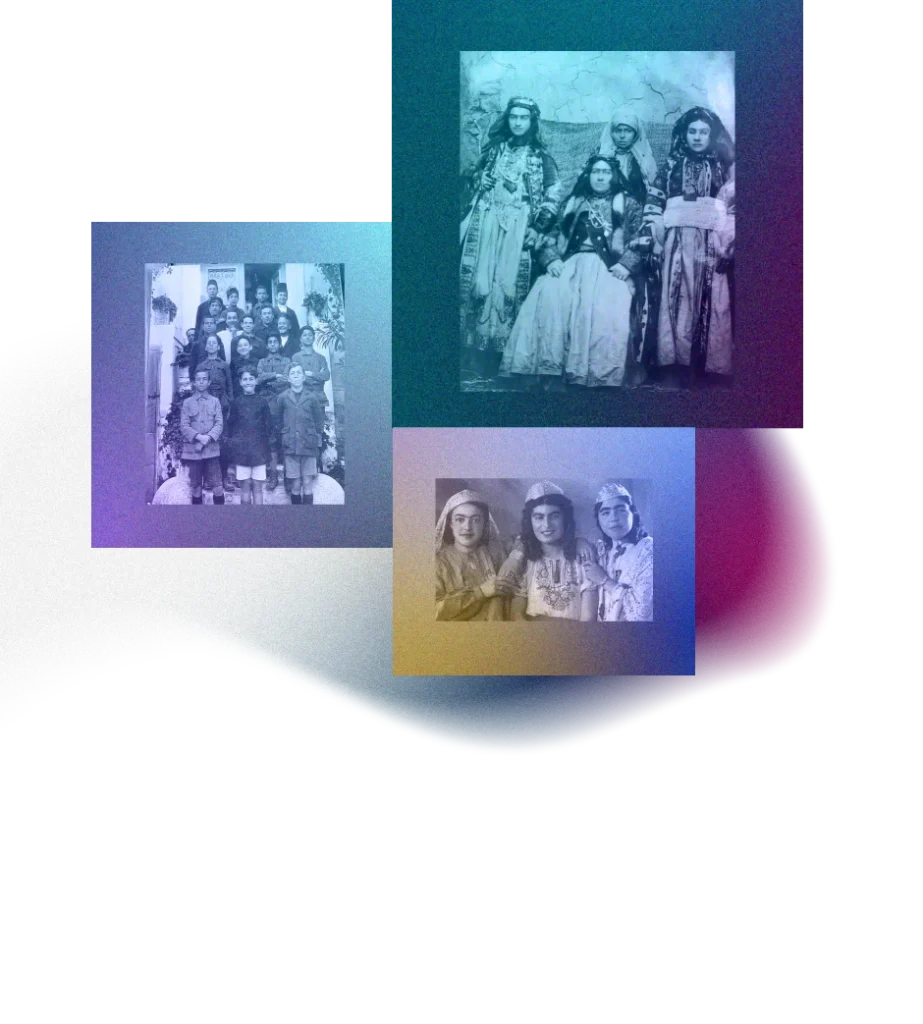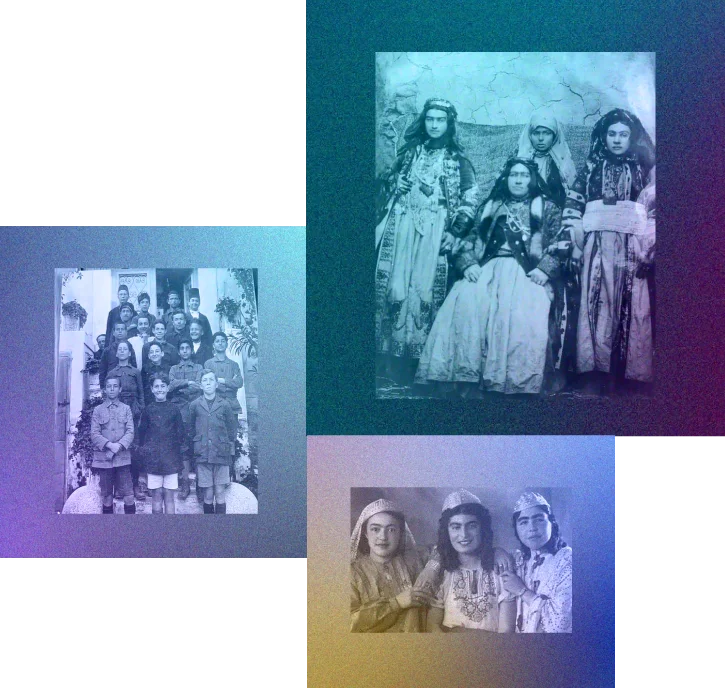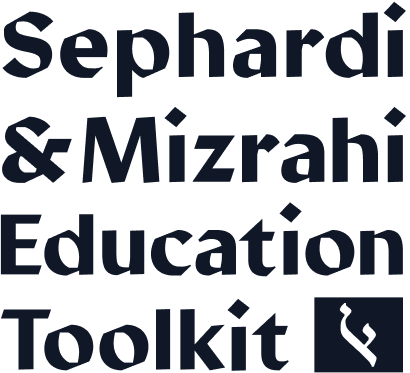

Who are Sephardi
& Mizrahi Jews?
Defining “Sephardi” and/or “Mizrahi” is a matter of debate, and scholars have used various geographic, linguistic, religious, and cultural criteria in determining who does or does not fit these categories
“A tension between
the general Sephardic
'umbrella' and more
particular identities
further complicates the
task of defining
Sephardim, as individuals
and/or communities."
Defining “Sephardi” and/or “Mizrahi” is a matter of debate, and scholars have used various geographic, linguistic, religious, and cultural criteria in determining who does or does not fit these categories.
One school of thought defines these groups based on geography and language, distinguishing between Sephardic Jews, who trace their ancestry to the Iberian Peninsula, and Mizrahi Jews, with Middle Eastern locales of origin. According to this understanding, Sephardic Jews are descended from speakers of Judeo-Spanish (Ladino), whereas Mizrahi Jews spoke languages reflecting their areas of origin, such as Judeo-Arabic or Judeo-Persian.
Because dynamic migration patterns throughout Jewish history have blurred distinctions between discrete ethnic and linguistic groups, others prefer to use the term Sephardi to encompass “that branch of the Jewish people whose roots are in the lands of the Mediterranean and Western Asia, including their eastern and western diasporas.” This broad geographic area from Northern Africa to Afghanistan does not make a distinction between Sephardi and Mizrahi Jews. Says Daniel Elazar, “what is most important as a distinguishing characteristic is not the specific culture acquired in any particular country of exile by any particular Jewish population, but the broader issues of halakhah and mishpat (Jewish law), community organization, and common cultural patterns from food to synagogue rituals.” This understanding defines Sephardim according to religious practice, communal affiliation, and cultural behaviors and heritage. Indeed, Rabbi Ovadia Yosef (1920-2013), a prominent rabbinic and political force in modern Israeli society, saw part of his life’s work as reclaiming “Sephardi” for the non-Ashkenazic world, and unifying disparate ethnic groups under one Sephardic liturgical and halakhic banner.
A tension between the general Sephardic “umbrella” and more particular identities further complicates the task of defining Sephardim, as individuals and/or communities. In some communities, geographic, regional, and/or ethnic identity trumps affiliation with other non-Ashkenazic groups; sometimes even narrower self-identifications based on internally-defined criteria take precedence. Cooper refers to this approach as the “Edah Paradigm,” “defining diaspora groups as discrete units, edot [tribes], and…legitimizing and celebrating their unique histories and traditions.”
This curriculum guide takes an expansive approach and presents all of these definitions as valid and mutually inclusive. This inclusion guide is intended to facilitate openness and understanding to those groups who consider themselves to be members of Sephardi and/or Mizrahi communities.
One school of thought defines these groups based on geography and language, distinguishing between Sephardic Jews, who trace their ancestry to the Iberian Peninsula, and Mizrahi Jews, with Middle Eastern locales of origin. According to this understanding, Sephardic Jews are descended from speakers of Judeo-Spanish (Ladino), whereas Mizrahi Jews spoke languages reflecting their areas of origin, such as Judeo-Arabic or Judeo-Persian.
Because dynamic migration patterns throughout Jewish history have blurred distinctions between discrete ethnic and linguistic groups, others prefer to use the term Sephardi to encompass “that branch of the Jewish people who roots are in the lands of the Mediterranean and Western Asia, including their eastern and western diasporas,” not making a distinction between Sephardic and Mizrahi Jews. Says Daniel Elazar, “what is most important as a distinguishing characteristic is not the specific culture acquired in any particular country of exile by any particular Jewish population, but the broader issues of halakhah and mishpat (Jewish law), community organization, and common cultural patterns from food to synagogue rituals.” This understanding defines Sephardim according to religious practice, communal affiliation, and cultural behaviors and heritage. Indeed, Rabbi Ovadia Yosef (1920-2013), a prominent rabbinic and political force in modern Israeli society until his passing, saw part of his life’s work as reclaiming “Sephardi” for the non-Ashkenazic world, and unifying disparate ethnic groups under one Sephardic liturgical and halakhic banner.
“A tension between the general Sephardic ‘umbrella’ and more particular identities further complicates the task of defining Sephardim, as individuals and/or communities.”
A tension between the general Sephardic “umbrella” and more particular identities further complicates the task of defining Sephardim, as individuals and/or communities. In some communities, geographic, regional, and/or ethnic identity trumps affiliation with other non-Ashkenazic groups. Cooper refers to this approach as the “Edah Paradigm,” “defining diaspora groups as discrete units, edot [tribes], and…legitimizing and celebrating their unique histories and traditions.”
This curriculum guide takes an expansive approach and presents all of these definitions as valid and mutually inclusive. This inclusion guide is intended to facilitate openness and understanding to those groups who consider themselves to be members of Sephardic and/or Mizrahi communities.






